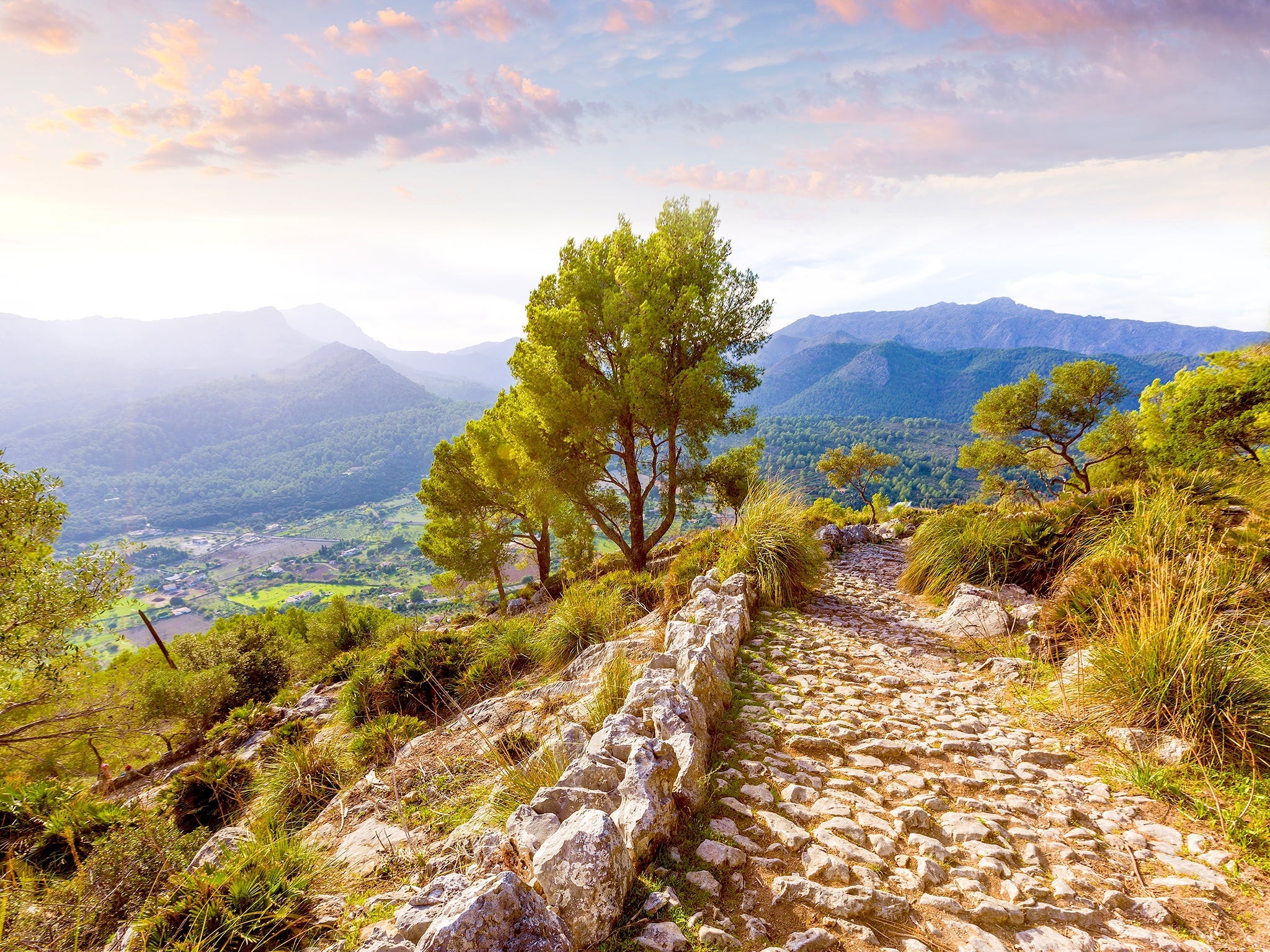In tough times, we can find hope in unchanging places
In the latest of his reflections on place and pathway, Will Gore recalls two visits to a Mallorcan monastery


There is a green and rocky hill far away, which I think of often. Perhaps I have thought of it more than usual in recent times, confined as we are to our immediate environs.
It is hardly the most remote of places: it stands just a short distance outside the town of Pollenca in northern Mallorca, rising to just over a thousand feet at its peak – though it feels higher by virtue of being detached from other hills; a perfect island, thrusting skywards, surrounded by farmland on the coastal plain.
Nor is it a lonely spot. Most tourists to that part of the island may primarily be there for swimming pools or the sea, but the Puig de Maria attracts its fair share of visitors. It would get many more if it was easily accessible by car, and if the heat wasn’t quite so sapping.
You can, to be fair, drive part of the way up without huge difficulty, although there are few places to park. Intrepid drivers – or those who care not a fig for their suspension, or the wrath of their car hire firm – can continue even when the tarmac gives way to a track that is as much pothole as dust.
A few months before, our first son had been born prematurely and died a day later. We felt hollowed out by the experience – but at the top of that hill, a normal life felt less impossible
Even so, the last 25 minutes can only be done on foot. Most visitors climb more or less from the base, as we did two summers ago, trailing along the narrow track that winds its way around tight hairpin bends, hemmed in by holm oaks and the occasional pine.
Towards the summit, the trees thin – pines now interspersed with olive and the occasional cypress – and the final approach is on cobbled steps which in places have been worn to a treacherous sheen. We jollied the children along as well as we could; I carried my small son on my shoulders for lengthy stretches. At last we glimpsed buildings ahead, constructed of creamy stone.
The Santuari de la Mare de Deu was built atop the hill in the years from 1348, a response to the Black Death epidemic sweeping Europe. Nuns settled there a few decades later and in the 15th century defences were added so that local people could seek protection in the event of pirate incursions.
A sense of calm and safety still pervades. The chapel, where incense lingers, is dark and cool. Outside, from the broad courtyard, views extend to the sea and to the higher mountains that steeple above the northern side of the bay of Pollenca.
Our children ate the apples and cake we had brought with us, never mind how warm they had become. They marvelled at the myriad cats which wandered the complex, and kept a wary distance from the angry chickens which clucked about.
We had, in fact, been here before, six years earlier. Our daughter was two and a half then, and had been the beneficiary of my shoulders on that occasion. The chickens hadn’t been in evidence but the cats had, and she had spent a happy time petting them, as we lazed in the shade of an olive tree. A few months before, our first son had been born prematurely and died a day later. We felt hollowed out by the experience – but at the top of that hill, a normal life felt less impossible.
Returning in 2018 with two children, which for a long time had seemed an unlikely prospect, to a place that was utterly unchanged, was a reminder that through every period of personal tumult, the world keeps turning. And when things are at their bleakest, we must hold on to the knowledge that they can get better.
Join our commenting forum
Join thought-provoking conversations, follow other Independent readers and see their replies
Comments
Bookmark popover
Removed from bookmarks